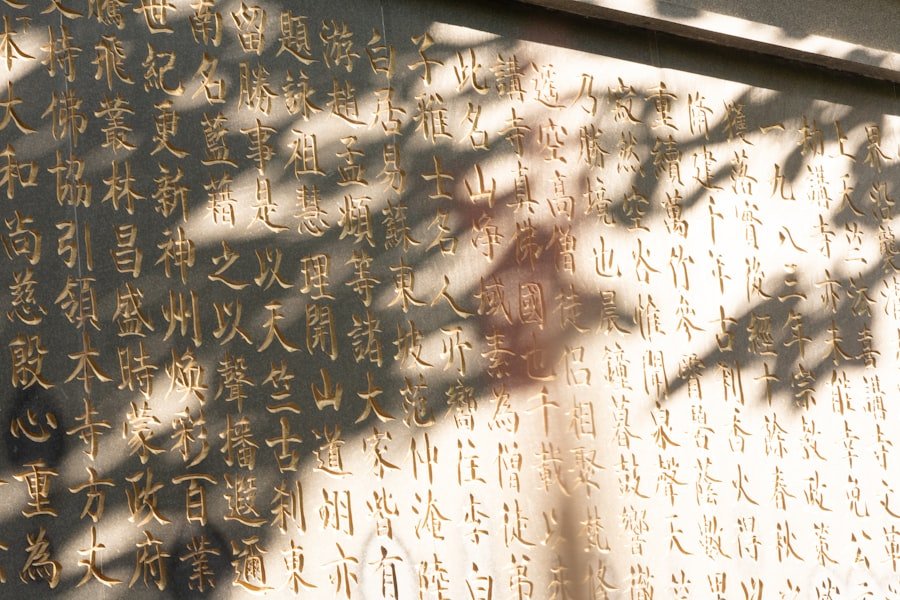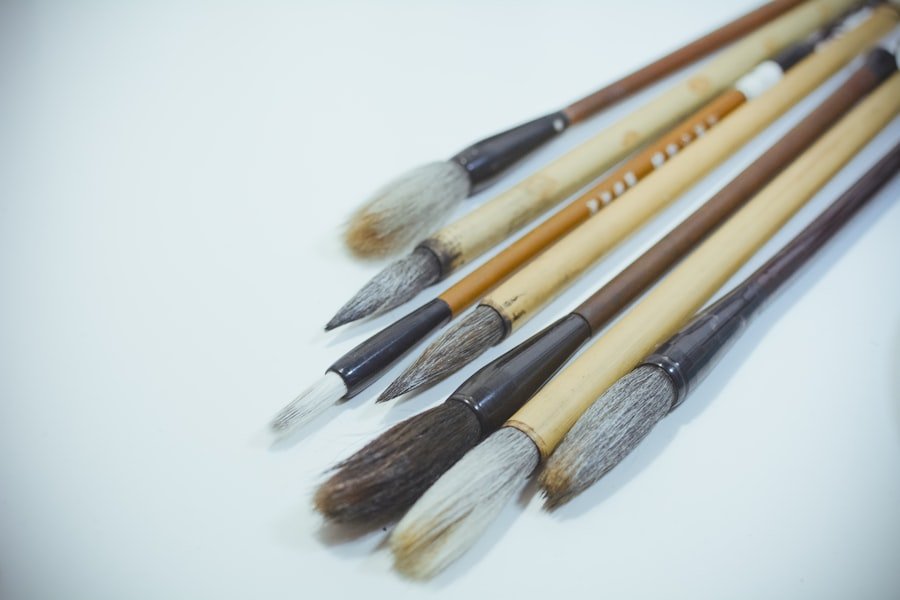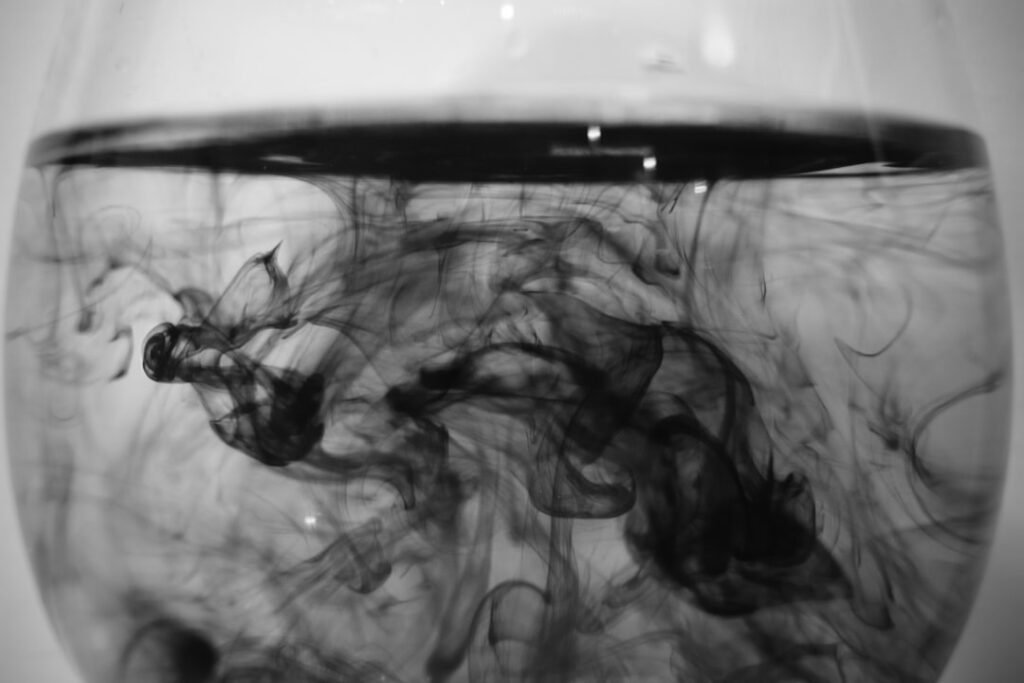Chinese Seal Script, known as “Zhuanshu” in Mandarin, is a fascinating and intricate form of writing that has captivated scholars, artists, and enthusiasts alike for centuries. This ancient script, characterised by its elegant curves and distinctive strokes, serves as a bridge between the past and present of Chinese calligraphy. It is not merely a means of communication but an art form that embodies the rich cultural heritage of China.
The beauty of Seal Script lies not only in its aesthetic appeal but also in its historical significance, as it reflects the evolution of the Chinese language and writing system. As we delve into the world of Chinese Seal Script, we uncover a tapestry woven with stories of dynasties, philosophies, and artistic expression. This script has played a pivotal role in shaping the identity of Chinese culture and continues to inspire contemporary calligraphers and artists.
Understanding Seal Script is essential for anyone interested in the nuances of Chinese writing, as it lays the groundwork for appreciating the subsequent developments in Chinese calligraphy. Master the art of Chinese calligraphy. Enroll now at the LC Chinese School in Oslo.
Table of Contents
ToggleSummary
- Chinese Seal Script is an ancient form of writing that originated in China.
- Chinese Seal Script has evolved over time and has influenced other forms of Chinese writing.
- The transition from Chinese Seal Script to Clerical Script marked a significant change in the style of writing.
- Regular Script, influenced by Clerical Script, became the standard form of writing in China.
- The legacy of Chinese Seal Script can still be seen in modern Chinese writing, demonstrating its enduring significance in Chinese culture.
The Origins and Development of Chinese Seal Script
The origins of Chinese Seal Script can be traced back to the Shang Dynasty (c. 1600–1046 BCE), where it emerged as one of the earliest forms of written communication in China. Initially used for divination and ritualistic purposes, these inscriptions were often carved onto oracle bones and bronze vessels.
As time progressed, the script evolved, influenced by various dynasties and cultural shifts. The Qin Dynasty (221–206 BCE) marked a significant turning point in the development of Seal Script, as Emperor Qin Shi Huang sought to unify the diverse writing systems across his vast empire. During this period, the standardisation of characters became paramount, leading to the establishment of what we now recognise as Seal Script.
This script was not only used for official documents but also for seals, which were symbols of authority and identity. The artistry involved in crafting these seals contributed to the aesthetic qualities of Seal Script, making it a revered form of expression among scholars and officials. Over time, different styles emerged, reflecting regional variations and personal interpretations, further enriching the tapestry of Chinese writing.
The Characteristics and Features of Chinese Seal Script

Chinese Seal Script is distinguished by its unique characteristics that set it apart from other forms of writing. One of its most notable features is the use of bold, sweeping strokes that create a sense of fluidity and movement. The characters are often more rounded and less angular than those found in later scripts, giving them an organic quality that is visually striking.
Additionally, Seal Script tends to have a more intricate structure, with characters often comprising multiple components that are artistically intertwined. Another defining aspect of Seal Script is its emphasis on balance and harmony. Calligraphers who practise this style pay meticulous attention to the spacing and proportion of each character, ensuring that they convey a sense of unity on the page.
This focus on aesthetics is not merely superficial; it reflects the philosophical underpinnings of Chinese culture, where beauty and functionality are intertwined. The result is a script that is not only legible but also a work of art in its own right.
The Transition from Chinese Seal Script to Clerical Script
As Chinese society evolved, so too did its writing systems. The transition from Seal Script to Clerical Script (or “lishu”) occurred during the Han Dynasty (206 BCE–220 CE), a period marked by significant political and cultural changes. Clerical Script emerged as a response to the practical needs of administration and record-keeping, necessitating a more efficient form of writing that could be produced quickly and legibly.
Clerical Script retained some elements of Seal Script but introduced new features that made it more suitable for everyday use. The characters became more simplified and linear, allowing for faster writing without sacrificing clarity. This transition was not merely a change in style; it represented a shift in the way people interacted with written language.
As literacy rates increased and bureaucratic systems expanded, Clerical Script became the dominant form of writing in official documents and correspondence.
The Influence of Clerical Script on Regular Script
The evolution from Clerical Script to Regular Script (or “kaishu”) was a natural progression that occurred during the late Han Dynasty and into the subsequent periods. Regular Script emerged as a refinement of Clerical Script, combining its efficiency with a renewed emphasis on aesthetics. This new script was characterised by its clear structure and balanced proportions, making it ideal for both formal documents and artistic expression.
The influence of Clerical Script on Regular Script is evident in several ways. For instance, many characters retained their simplified forms from Clerical Script while adopting a more refined appearance in Regular Script. This blending of styles allowed Regular Script to become widely accepted across various domains, from literature to education.
As Regular Script gained prominence, it became the standard for printed materials, further solidifying its place in Chinese culture.
The Standardization and Spread of Regular Script

The standardisation of Regular Script was a crucial development in the history of Chinese writing. During the Tang Dynasty (618–907 CE), efforts were made to unify the various regional styles of writing into a cohesive system that could be easily understood across China. This standardisation was facilitated by advancements in printing technology, which allowed for the mass production of texts using movable type.
As Regular Script spread throughout China, it became synonymous with education and scholarship. Scholars began to favour this script for their writings, leading to an explosion of literary works that showcased its versatility and beauty. The widespread adoption of Regular Script also contributed to increased literacy rates among the general populace, as it became the primary medium for teaching reading and writing in schools.
The Role of Regular Script in Chinese Calligraphy
Regular Script holds a special place in the realm of Chinese calligraphy, serving as both a practical writing system and an artistic medium. Calligraphers who specialise in Regular Script often explore its nuances through various techniques and styles, creating works that reflect their individual interpretations while adhering to traditional principles. The balance between formality and expressiveness makes Regular Script an ideal canvas for artistic exploration.
In calligraphy competitions and exhibitions, Regular Script is frequently showcased alongside other styles, highlighting its enduring appeal. The script’s clarity allows viewers to appreciate the intricacies of each character while also conveying deeper meanings through brushwork and composition. As such, Regular Script has become a staple in calligraphic practice, bridging the gap between traditional techniques and contemporary artistic expression.
The Impact of Regular Script on Chinese Literature and Art
The impact of Regular Script on Chinese literature cannot be overstated. As the primary writing system for literary works, it has shaped the way stories are told and ideas are communicated throughout history. From classical poetry to modern novels, Regular Script has provided authors with a versatile tool for expressing their thoughts and emotions.
Its clarity allows readers to engage with texts more easily, fostering a rich literary tradition that continues to thrive today. In addition to literature, Regular Script has also influenced various forms of visual art. Artists often incorporate calligraphic elements into their paintings, using Regular Script to convey messages or enhance the overall composition.
This interplay between text and image creates a dynamic relationship that enriches both art forms. Furthermore, exhibitions showcasing calligraphy often feature works in Regular Script alongside traditional paintings, emphasising its significance within the broader context of Chinese artistic expression.
Comparing Chinese Seal Script, Clerical Script, and Regular Script
When comparing Chinese Seal Script, Clerical Script, and Regular Script, one can observe distinct differences in style, function, and historical context. Seal Script is characterised by its ornate designs and artistic flair, making it ideal for seals and ceremonial inscriptions but less practical for everyday use. In contrast, Clerical Script emerged as a more functional alternative that prioritised speed and efficiency while retaining some aesthetic qualities.
Regular Script represents a further evolution that balances practicality with artistry. It combines the clarity needed for effective communication with an elegance that appeals to calligraphers and artists alike. Each script serves its purpose within specific contexts; while Seal Script evokes a sense of tradition and heritage, Clerical Script reflects administrative needs, and Regular Script embodies contemporary literary and artistic practices.
The Legacy of Chinese Seal Script in Modern Chinese Writing
Despite its gradual decline in everyday use, the legacy of Chinese Seal Script endures in modern Chinese writing. Elements of Seal Script can still be found in contemporary calligraphy practices, where artists draw inspiration from its fluidity and gracefulness. Additionally, many seals used today are crafted using techniques derived from Seal Script, preserving its artistic essence within modern contexts.
Moreover, Seal Script continues to be studied by scholars and enthusiasts who appreciate its historical significance and aesthetic beauty. Calligraphy courses around the world often include lessons on Seal Script as part of their curriculum, allowing new generations to connect with this ancient art form. In this way, Seal Script remains an integral part of China’s cultural identity while adapting to contemporary expressions.
The Significance of the Historical Evolution from Chinese Seal Script to Regular Script
The historical evolution from Chinese Seal Script to Regular Script is not merely a tale of changing styles; it represents a profound journey through time that reflects shifts in culture, society, and communication. Each script has played a vital role in shaping the landscape of Chinese writing and calligraphy while contributing to the rich tapestry of Chinese heritage. Understanding this evolution allows us to appreciate not only the beauty of each script but also their interconnectedness within the broader narrative of Chinese history.
As we continue to explore these ancient forms of writing today—especially through courses like those offered at LC Chinese School in Oslo—we gain insight into their significance while fostering a deeper appreciation for the art of calligraphy itself. The school’s emphasis on traditional techniques ensures that students not only learn about these scripts but also engage with them creatively, preserving their legacy for future generations while celebrating their enduring beauty in modern contexts.
Master the art of Chinese calligraphy. Enroll now at the LC Chinese School in Oslo.







